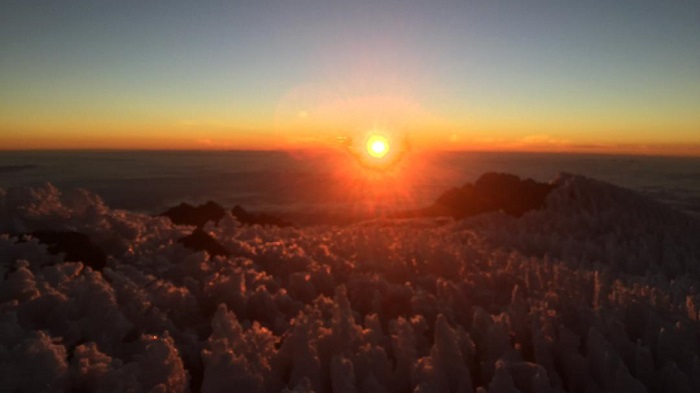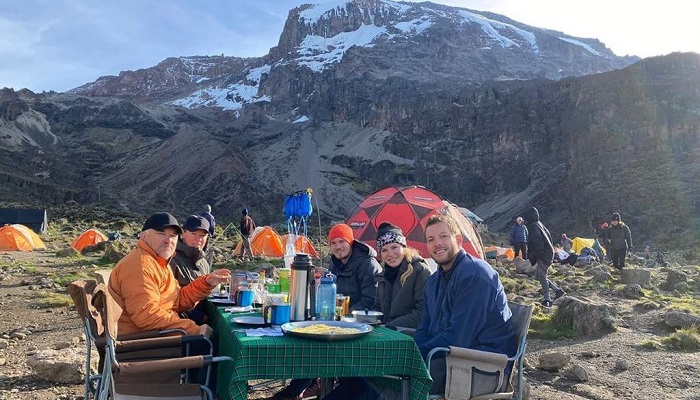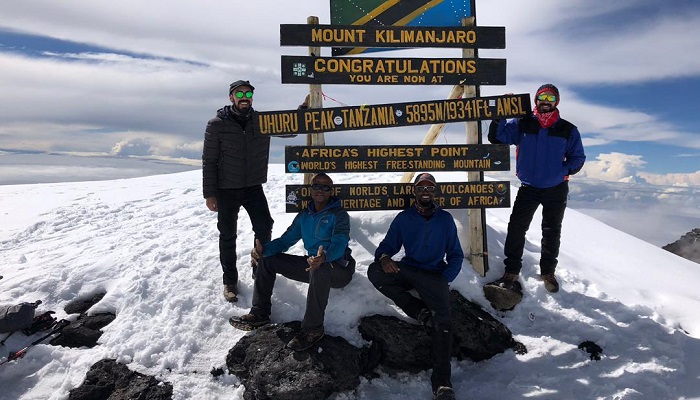
MT. Kilimanjaro Weather
Due to its proximity to the equator, Mount Kilimanjaro does not experience wide temperature changes from season to season. Instead, the temperatures on Mount Kilimanjaro are determined more so by the altitude and time of day. At the beginning of the climb, at the base of the mountain, the average temperature is around 70 to 80 degrees Fahrenheit (21 to 27 degrees Celsius). From there, the temperatures will decrease as you move through Mount Kilimanjaro’s ecological zones.
At the summit, Uhuru Point, the night time temperatures can range between 20 and -20 degrees Fahrenheit (-7 to -29 degrees Celsius). Due to Mount Kilimanjaro’s great height, the mountain creates its own weather. It is extremely variable and impossible to predict. Therefore, regardless of when you climb, you should always be prepared for wet days and cold nights.
There are five vegetation zones on Kilimanjaro: cultivated lower elevations; montane forest; moorland; alpine desert and the barren arctic summit zone. Some wildlife may be seen in the forests of Kilimanjaro.
The wheather (temperature, humidity and rain) of Kilimanjaro varies from month to month over the year as shown in the table below :-
| Month | Low (F) | Average (F) | High (F) | Humidity (%) | Rain Fall (in) |
|---|---|---|---|---|---|
| January | 64 | 78 | 92 | 58 | 1.4 |
| February | 64 | 78 | 92 | 57 | 2.0 |
| March | 66 | 78 | 90 | 63 | 4.7 |
| April | 67 | 76 | 85 | 73 | 13.8 |
| May | 65 | 72 | 79 | 77 | 9.3 |
| June | 62 | 70 | 78 | 69 | 1.0 |
| July | 60 | 69 | 78 | 69 | 1.0 |
| August | 60 | 60 | 80 | 69 | 0.7 |
| September | 60 | 71 | 83 | 61 | 0.6 |
| October | 62 | 75 | 88 | 57 | 1.0 |
| November | 64 | 76 | 86 | 57 | 2.5 |
| December | 64 | 77 | 90 | 60 | 2.1 |
Kilimanjaro During Full Moon
During a full moon, the summit of Mount Kilimanjaro is particularly beautiful. The glaciers are lit up by the bright moon and the views are absolutely stunning. Another advantage of trekking at this time is that the moonlight will improve your visibility throughout your trek, most importantly during your final ascent to Uhuru Peak.
Although it's not necessary to reach the summit on the exact full moon date to take advantage of the moonlight, many people wish to reach Uhuru Peak when the moon is at its fullest.
If you do wish to summit on a full moon, a seven-day climb should start five days before the full moon date and an eight-day climb should start six days prior to the full moon date. Book well in advance, as only a limited number of people are allowed on the mountain at any time and these dates are very popular.
If you’re looking for a quieter trek – and a sky full of bright stars – we recommend that you avoid the full moon period altogether.


